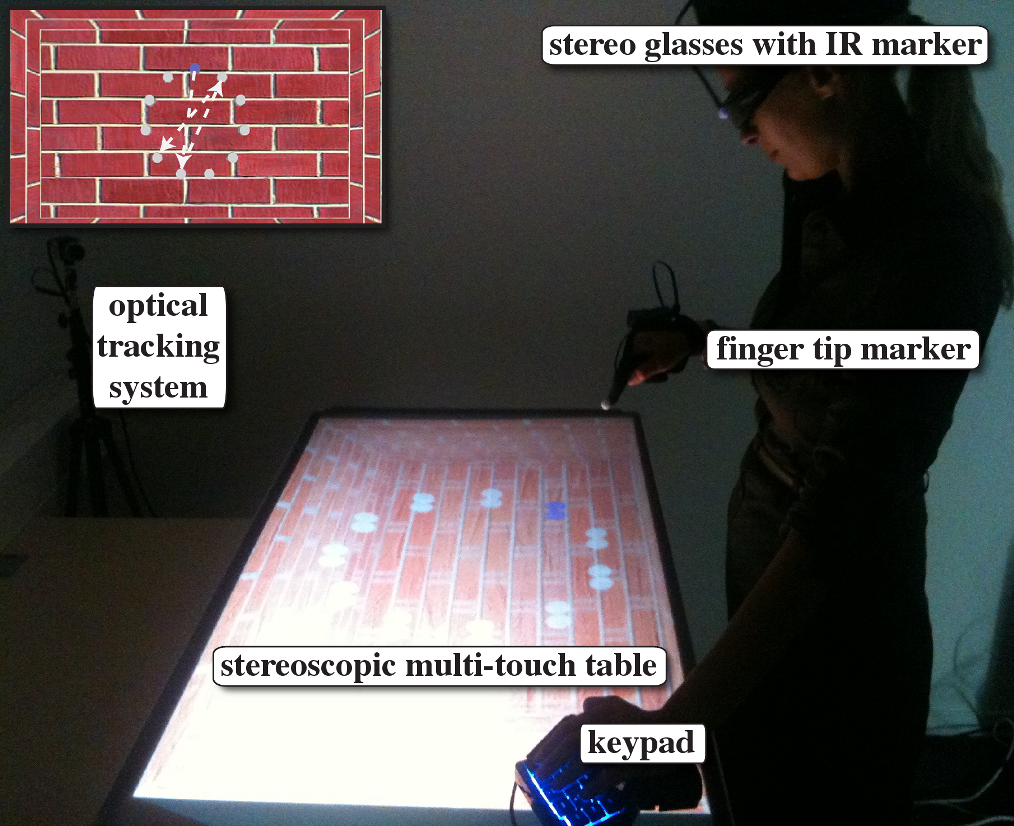
Effects of Visual Conflicts on 3D Selection Task Performance in Stereoscopic Display Environments Inproceedings
Gerd Bruder, Frank Steinicke, Wolfgang Stuerzlinger
Abstract:
Mid-air direct-touch interaction in stereoscopic display environments poses challenges to the design of 3D user interfaces. Not only is passive haptic feedback usually absent when selecting a virtual object displayed with positive or negative parallax relative to a display surface, but such setups also suffer from inherent visual conflicts, such as vergence/accommodation mismatches and double vision. In particular, if the user tries to select a virtual object with a finger or input device, either the virtual object or the user's finger will appear blurred, resulting in an ambiguity for selections that may significantly impact the user's performance. In this paper we evaluate the effect of visual conflicts for mid-air 3D selection performance within arm's reach on a stereoscopic table with a Fitts' Law experiment. We compare three different techniques with different levels of visual conflicts for selecting a virtual object: real hand, virtual offset cursor, and virtual offset hand. Our results show that the error rate is highest for the real hand condition and less for the virtual offset-based techniques. However, our results indicate that selections with the real hand resulted in the highest effective throughput of all conditions. This suggests that virtual offset-based techniques do not improve overall performance.
